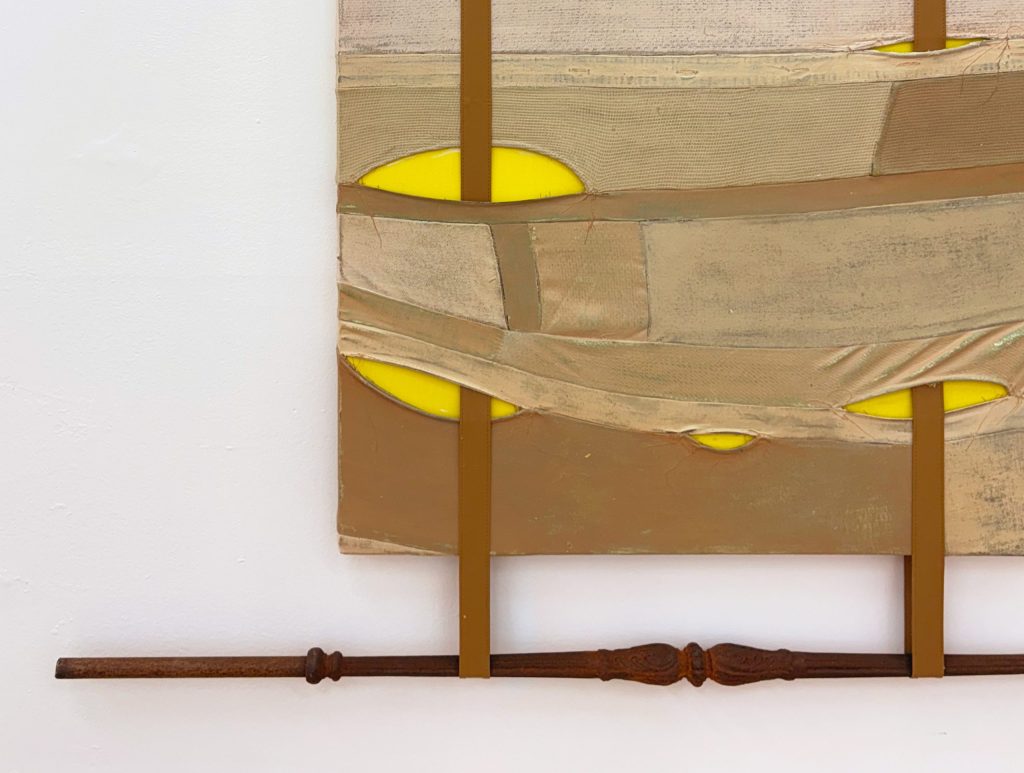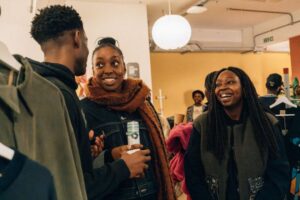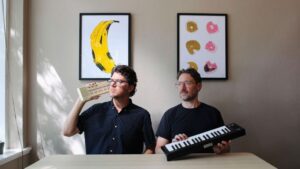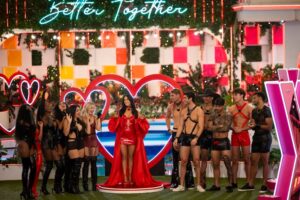How Can Queer Artists Escape the Trap of Tokenization?


The recent rise of queer figurative painting has illuminated previously marginalized dimensions of intimacy. Yet visibility, however necessary, can inadvertently constrain; legibility risks solidifying into static symbolism, trapping identities within tokenized forms. The Unruly Dance of Form at Fragment Gallery navigates this tension, pivoting toward incompletion and indeterminacy across multiple mediums and embracing ambiguity to explore queer politics beyond defined representation.
The exhibition stages an intentional collapse of certainty. Forms emerge as fragments — never whole, never stable. Familiar objects such as table legs, chairs, and window bars are displaced and stripped of utility, suspended between functionality and ruin. Human bodies are glimpsed mid-motion or precariously balanced, as if improvising meaning in real-time. Amid pervasive uncertainty, queerness emerges as a deliberate unraveling of solidity across the diverse works of eight artists.


Consider Gordon Hall’s “Graphite Covered Leg (Turned)” (2024), a single cast concrete table leg coated with graphite. Rather than supporting weight, it leans uneasily against a wall, resembling more a shaman’s staff than structural support, stripped entirely of its intended function. Cameron Patricia Downey’s “Bass” (2024) gathers debris from a shuttered department store into an uncanny monument. These reclaimed fragments, marked by mundane traces such as gum stuck to surfaces, bear witness to intersecting temporalities, simultaneously embodying intimate memory and ideological rupture. Together, these works invoke Jack Halberstam’s notion of anarchitecture, a purposeful dismantling of built forms that seeks to unsettle norms around gender, power, and ownership. By explicitly referencing architecture, the exhibition sharpens its critique of normative frameworks, illuminating how queer lives reshape physical and ideological terrains, disrupting the structures governing embodied experience.
Crucially, the exhibition resists privileging any singular form. Queerness and formalism share a fraught historical relationship: Postwar formalism, with its insistence on aesthetic autonomy and purity, became a contested site through which queer artists simultaneously disrupted established paradigms and inscribed queer sensibilities. Yet these interventions occasionally generated unintended consequences, inadvertently reinforcing the normative frameworks they sought to dismantle. In response to this tension, the restless heterogeneity of The Unruly Dance of Form remains intentionally indecisive — not through indifference, but rather an active suspension of judgment. This space for contemplation without judgment feels increasingly urgent today, as queer art faces rapid commodification and reactionary politics. By staging collapse without resolution, the exhibition asserts that queer existence draws strength precisely from instability. To linger among fragments is to remain attentive to fracture, to possibility. Ambiguity itself becomes an act of care, pointing queerness toward transformative potential.




The Unruly Dance of Form continues at Fragment Gallery (39 West 14th Street #308, West Village, Manhattan) through May 10. The exhibition was organized by the gallery.





